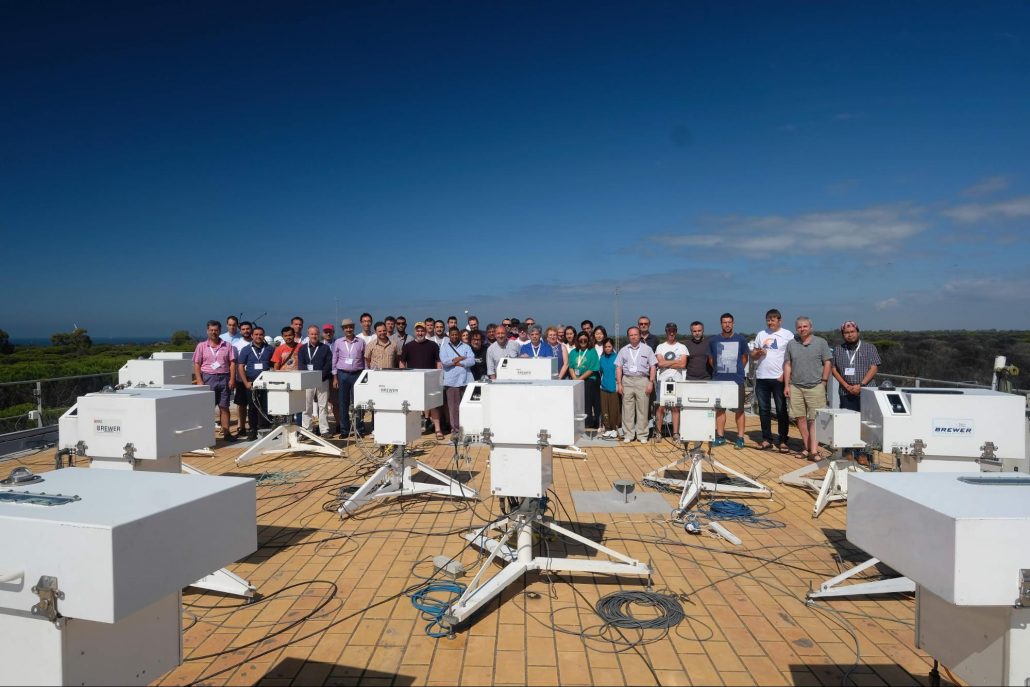Foreword
Dear EUBREWNET contributor – did you know that your data is now considered part of a fiducial reference network and is used for TROPOMI Sentinel 5P ozone validation? In this our first newsletter you can find out how EUBREWNET, which you all played a part in creating, has matured and developed and is working to make sure that your data is recognised as having the highest quality and accredited to you, the producer.
Please read on to find out more, always remember that any feedback will be welcome and appreciated, and please send us details of your EUBREWNET related publications.
Network status and new stations.
Six new stations have joined EUBREWNET in 2019: Nairobi (Kenya), Athens (Greece), Buenos Aires (Argentina), Petaling Jaya (Malaysia), New Delhi (India), and Princess Elizabeth (Antarctica). The number of stations taking part in the network is now 57. With regard to users, we have created 21 new accounts, which raises the total number of registered users to almost 120.
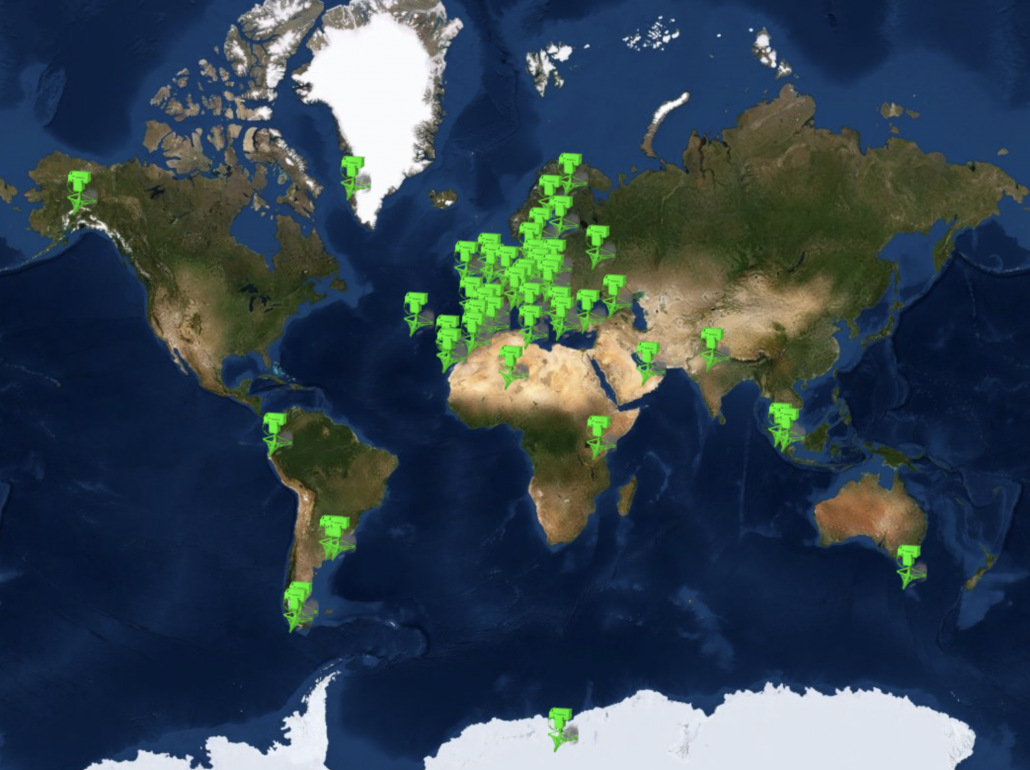
Governance
Since the end of 2018, support to EUBREWNET has been provided by AEMET. The conduct of activities carried out are overseen by a governance committee within the WMO SAG Ozone, which includes J. Rimmer (University of Manchester, UK), A. Redondas (Izaña Atmospheric Research Centre, AEMET, Spain), T. Kralidis (WOUDC), M. Tully (O3 SAG Chair), and C. Sinclair (UV SAG Chair). Scientific input is provided by EUBREWNET’s Management Committee, consisting of J. Rimmer (University of Manchester, UK), A. Redondas (Izaña Atmospheric Research Centre, AEMET, Spain), A.F. Bais (Aristotle University of Thessaloniki, Greece), J. Gröbner (Physikalisch – Meteorologisches Observatorium Davos/World Radiation Center, Switzerland), T. Karppinen (Finnish Meteorological Institute, Arctic Research Center, Finland), and V. De Bock (Royal Meteorological Institute of Belgium, Belgium).
EUBREWNET as Fiducial Reference Network
During the last meeting of the Ozone Scientific Advisory Group of WMO, the Maturity Index Matrix for the EUBREWENET Network was presented. The maturity matrix has been developed within the H2020 GAIA-CLIM (www.gaia-clim.eu) project to different data products and networks, see Thorne et al. (2017). The idea behind this is to provide a framework and tool to semi-objectively classify measurement capabilities. The idea is also to identify and characterise mature data sets and include them in the Virtual Observatory developed within GAIA-CLIM to be used for satellite to non-satellite data comparisons. The EUBREWNET Maturity Index Matrix was evaluated by Karin Kreher with quite good results, so that Eubrewnet can be considered as a Fiducial Reference Network for total ozone measurements.
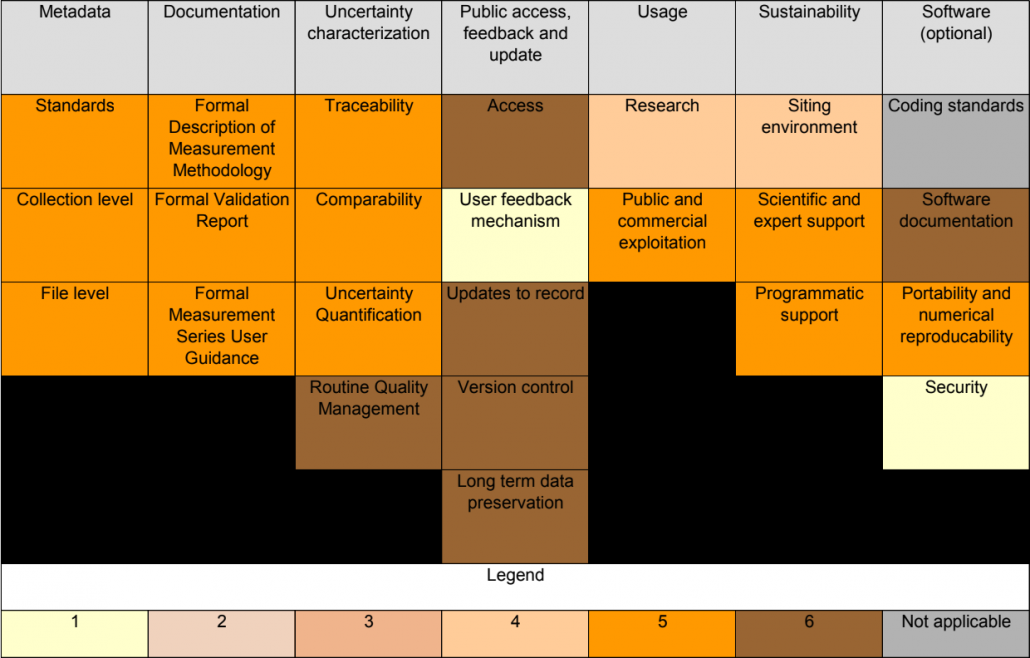
TROPOMI S5P total ozone column global validation within the VALTOZ project
The observations of individual Brewer spectrophotometers of EUBREWNET have been used for the validation of the TROPOMI Sentinel 5P ozone measurements (Garane et al., 2019). This was the first time EUBREWNET data was used for satellite validation. A similar future comparison is planned for NASA EPIC ozone observations. Only the high frequency EUBREWNET observations have sufficient time resolution to operationally validate the diurnal variation as provided by TROPOMI and EPIC.
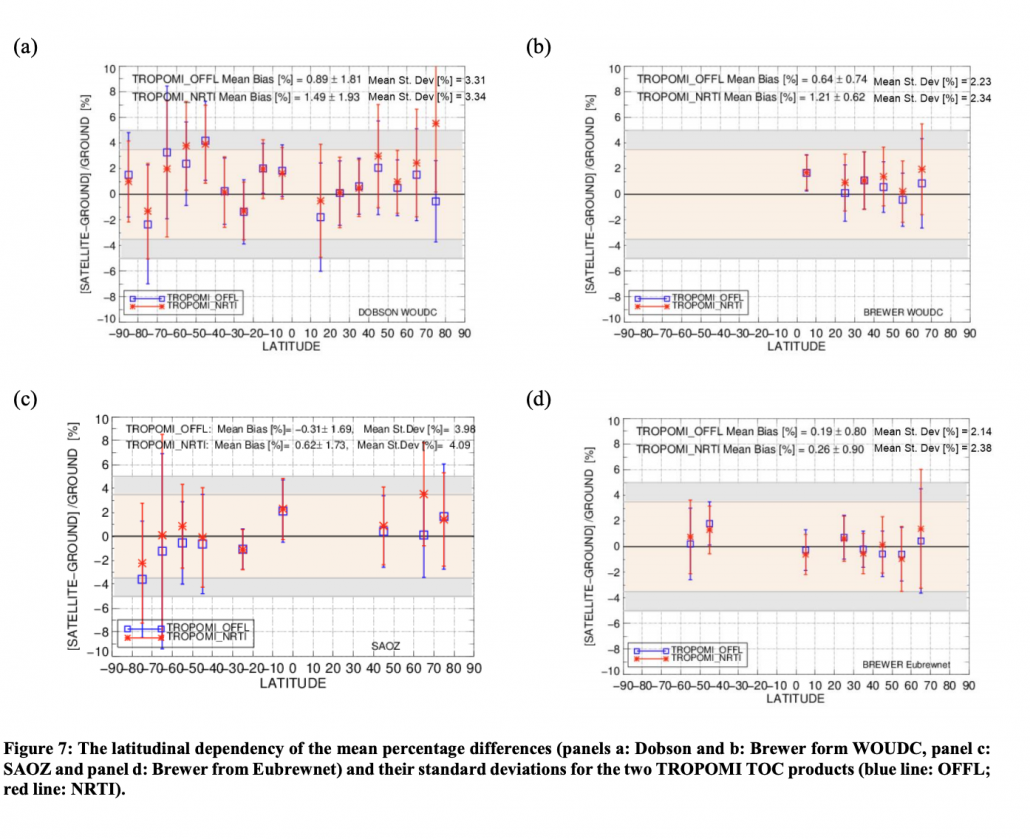
EUBREWNET ozone observations in Copernicus Climate Services

EUBREWNET was invited to the annual meeting of the “Access to observations from baseline and reference networks” (C3S_311a_Lot3_CNR) in July 2019. At this meeting Alberto Redondas gave a presentation of the network. In this project, WMO participates as a contractor and supplies the ozone data from WOUDC. The project wants to add EUBREWNET daily Level 2 data, in principle the same that is linked to from eubrewnet on WOUDC. Similar to the observations stored in WOUDC, the data in Eubrewnet are open and free and we don’t see any problem to submit these data by default. The Services show interest to have an error budget estimation of these observations and the ESA representative at the meeting is open to financially support this new development in EUBREWNET.
DOI linked to EUBREWNET datasets
EUBREWNET observations are beginning to be used for satellite validation and Climate Services, for example ESA Sentinel 5 (see Garane et al., 2019), EPIC satellite validation is on discussion with NASA and Climate Services like Copernicus CS3.
In the case of the total ozone deposited at WOUDC the data are open and free and most of the institutions collaborating with EUBREWNET follow the open data policy. The EUBREWNET data policy is available on the website. In short, co-authorship should be extended whenever the use of such data plays a significant role in published work. Further, the user should contact the associated measurement PI to ascertain whether there are any data revisions in progress, and to verify that the intended use of the data is scientifically appropriate. However, experience has shown that EUBREWNET data has been used in publications without proper reference or acknowledgments, although they constitute an important part of these publications.
Using a DOI for the EUBREWNET data is the best solution to properly reference the data even when it is ingested on wider systems like Copernicus.
-Permanent location and landing page will be provided by AEMET.
Granularity: One DOI for each data product from each station DOIs will be allocated for: data products and level.
E.g. “doi: 10.1234/XXXNNo3v10l15” →
10.1234: assigned by AEMET
XXXNNN : Station:Brewer
o3v1l15: data product (in this case total column o3 version 1 level 1.5)
p1-6: processor version
– The metadata will follow the ESA/AVDC guidelines (http://evdc.esa.int/documentation/doi-docs/), with the exception of the rights (copyright info) all the information is already on the database.
– The DOI will not change when the data are processed and updated.
Staff reinforcement
We are pleased to announce that AEMET, through TRAGSATEC (https://www.tragsa.es), is supporting EUBREWNET since February 2019 with two new staff positions. Alberto Berjón and Javier López-Solano have joined the development team of the EUBREWNET project to work on the online application and server maintenance, assistance to users, and support to the development of new functions in EUBREWNET. For any questions or suggestions, you can contact the development team at the email eubrewnet@aemet.es.
In the future, we will be able to give support to new stations, and finish some pending issues such as:
- implementation of manual inspections of Level 2 data for archiving
- development and upgrade of the new products
- re-processing of the ozone data with the new approved ozone cross sections
- development of the UV and AOD real time product
- implementation of link to WOUDC and export to GEOMS-HDF format for real time dissemination.
We would like to publicly thank Bentorey Hernández Cruz and many others for their invaluable efforts which have kept the system running, and also the organizations who provided support letters which have now helped to secure the continuity of the network. Thanks also to the station operators who have regularly submitted data to EUBREWNET, which now is an important part of satellite validation.
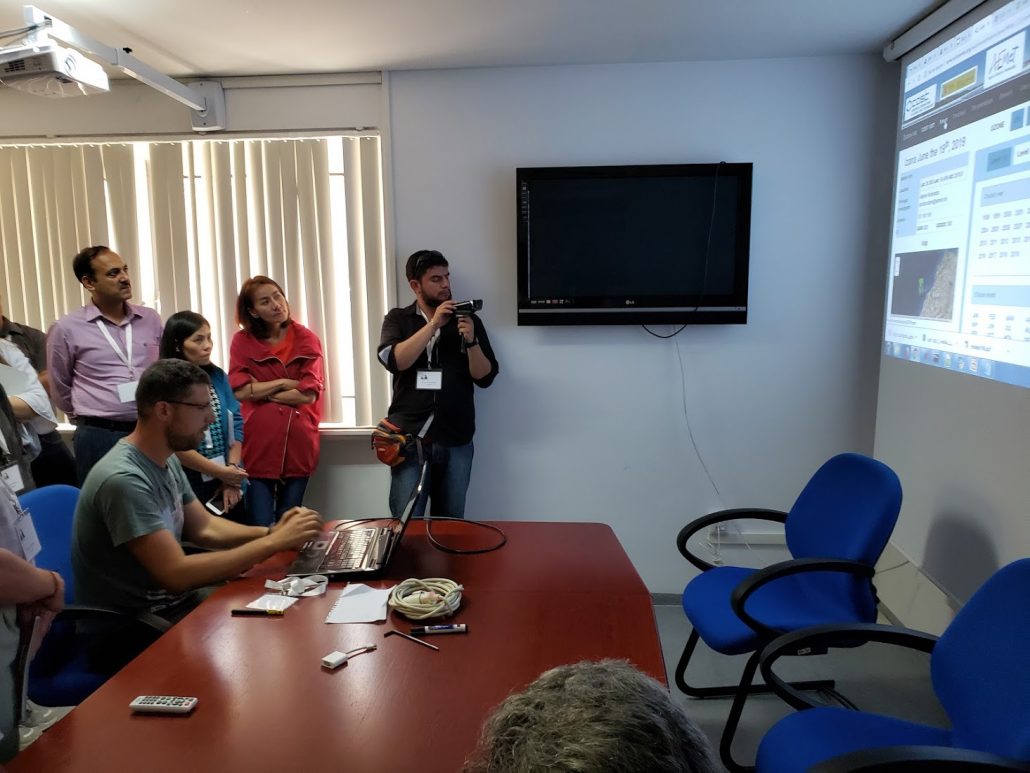
Development plan
The support provided by AEMET since February 2019 for a period of 3 years includes the following tasks:
Ozone: most of 2019’s development time has been devoted to ozone-related tasks:
- WOUDC indexing: we have already introduced new functionality in the EUBREWNET data server to provide a list of the available ozone products as requested by WOUDC. Very soon, we will also add to the server an “exclusion list”, so that Level 2.0 data can be generated.
- NDACC indexing: we have already started to work on the generation of the data files in the required format.
- Version 2 of the ozone algorithm: Including updated ozone cross-sections, airmass calculation, and Rayleigh coefficients. Work is expected to start at the beginning of 2020.
- Historical data: we plan to introduce modifications on EUBREWNET’s parser so that older B files can be read and inserted in the database. Work is planned to start in early 2020.
Aerosol Optical Depth: work is expected to take a year starting in the first half of 2020, and will include the following tasks:
- Configuration: we plan to finish the work started by Bentorey Hernández Cruz and add to the server the required functionality to insert the AOD configuration in a similar way as the ozone one.
- Near real time product: we already have a working code running in MATLAB, and we plan to implement it in Python in the same way as the Brewer Library developed by Alberto Berjón. Work is expected to start by the summer of 2020.
- Validation and Level 2.0 product: as with ozone, we also expect to develop a Level 2.0 AOD product. Work is expected to start by the end of 2020.
UV Radiation: work is expected to take another year and will include the same tasks already outlined for AOD. Work on the UV-specific configuration is planned to start in the first half of 2021. In summer 2021, we will continue with the development started by Kaisa Lakkala and Sergio León-Luis on the near real time product. Work on the Level 2.0 product is planned to start by the end of 2021.
Web design update
We are pleased to announce the launch of the new EUBREWNET website design. You can visit it at http://rbcce.aemet.es/eubrewnet
We have completely rebuilt the design and optimized the content of the pages to make the information more readable and easy to access. Some of the most notable changes are:
- The menu is changed to make navigation easier.
- Redesign of tables, and “nav tabs” to make them more intuitive.
- Homogenization of styles, linking each view to a single “layout” file.
We hope you find the new website with a fresh look and easy to use, and we will be happy to receive your feedback and ideas to improve the site.

In addition to the web design update, in September 2019 the renovation of the servers that host both the application and the database has been carried out. These systems are housed and maintained in the central services of AEMET.
Client update
We have also updated the data submission refresh client, mainly to include support for the latest changes introduced by IOS in the Brewer software with regard to the file/folder structure, and to improve the reliability of the submission process. Despite all these changes, the old and new versions of EUBREWNET’s client software share the same code at their core, so no changes in the client.ini configuration file are necessary. And of course, if you’re happy with the old version of the client, you don’t have to update — just note that some files won’t be sent automatically to EUBREWNET if you’re using the latest version of the IOS’ Brewer software.
For download links and further information, please take a look at the also updated Data submission guide
Bibliography
We have created a new page with the most relevant papers and presentations related to EUBREWNET, see http://www.EUBREWNET.org/cost1207/EUBREWNETs-bibliography/
We will keep updating this list regularly, please send us your publications to eubrewnet@aemet.es
Closing words
Watch out for our next Spring newsletter where we will bring you up to date with our progress and latest news. In the meantime, happy New Year from the EUBREWNET team!
